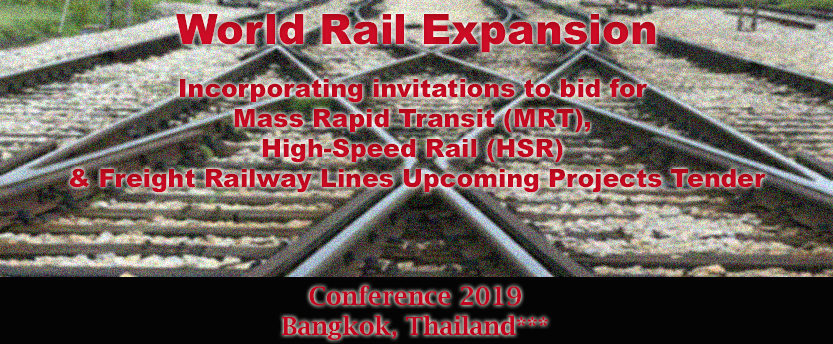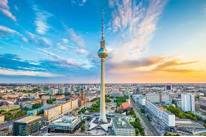|
Multi-billion dollars Vietnam’s metro rail and high-speed rail projects
In the implementation of metro rail project, Hanoi will build ten metro rail systems with a combined length of 417.8 kilometers. Hanoi will need over US$40 billion for the constructions, including US$7.5 billion in 2017-2020, US$7.6 billion in 2021-2025, US$3.5 billion in 2026-2030, and $21.3 billion after 2031. In HCMC, plans are in place to build a total of eight metro rail systems, with construction in varying stages of development. Currently, the first two lines of HCMC’s metro rail systems will start commercial operations in 2020, including line No. 1 expected to be fully in operational by the end of 2020, however, there is possibility for early partial opening for elevated section at the end of 2018 or in 2019. The opening of line No. 2 shall be by the end of 2020, while line No. 5 is scheduled for completion in 2025, will be driverless, with automated ticketing systems and smart cards. Metro line No. 3, line No. 4 and line No. 6 are still in the planning phase, while line No. 7 and No. 8 are in the blueprint stage. Cost estimates for lines No. 1 to No. 6 are US$2.49 billion, US$2.07 billion, US$3.69 billion, US$4.45 billion, US$4.47 billion and US$1.25 billion respectively, a total of over US$18 billion. In Danang, the process of drawing up a blueprint to develop three metro rail systems has begun, and is expected to be completed by 2020. In addition, Vietnam’s Transport Ministry is moving ahead with plans in the pipeline to commence the construction of Vietnam’s North-South HSR system in 2020, that will link Hanoi and HCMC, along 20 cities and provinces, covering a distance of 1,570 kilometres, with up to 70% of the route would be underground or elevated to avoid terrain difficulties as well as the impact on residential areas, with 23 stations along the route, including five main hubs. Vietnam’s North-South HSR project is valued at US$56 billion, with construction phase of the project is expected to begin in 2020. South America’s Bi-Oceanic Railway Corridor Project
The Central Bi-Oceanic Railway Corridor is a proposed coast-to-coast railroad across South America. The project is 3,800-km long, covering between the Pacific coast of Peru, through Bolivia and across Brazil to the Atlantic Ocean, and is estimated to cost US$10 billion. Plans for Kuwait’s US$7 billion metro rail project have been approved
Plans for the new Kuwait metro rail project are back on track, valued at US$7 billion. The metro rail project is due to be completed over five phases and is expected to include 68 stations, 60% of which will be underground. The first phase of the metro will be completed in the year 2025 and is for one line that starts from Salmiya and heads towards the airport. It will be 50-km long and have a total of 27 stations, 9 of which will be in the city center. The full metro project which comprises of five phases is expected to be completed by 2040. Biddings to build a metro rail system in Bahrain currently underway, estimating US$1 to US$2 billion
Bahrain plans to seek bids to build a metro railway system in the fourth quarter of 2019, estimated cost at US$1 billion to US$2 billion, and will be built with private participation. As part of Bahrain’s Public Transport Masterplan 2030, the metro railway project will have 184-km of transit network, comprising of six lines. These will be implemented in a phased manner by 2030, with Phase One will have 30-km of elevated track and 20 stations, which is likely to include an airport station, with 43,000 passengers per hour is likely to be the carrying capacity. Egypt plans for 1200-km high-speed rail costing US$18 billion
Egypt’s National Authority for Tunnels is looking for US$18 billion earmarked for a proposed 1200-km, high-speed rail connection linking the capital Cairo with the tourist hotspots of Alexandria, Luxor and Hurghada. Iran has approved the construction of 840-km of metro lines in megacities in a bid to alleviate the maddening traffic congestion
Over the past four years, more than US$2.1 billion were invested in rail infrastructure projects across Iran. In the next four years, US$5 billion will be invested in the development of rail transport infrastructure. Iran has approved the construction of 840-km of metro lines in megacities in a bid to alleviate the maddening traffic congestion, of which 294-km have become operational, while 295-km of metro are currently under construction, including line 6 and 7, while additional 251-km lines, including lines 8, 9 and 10 are up for grab, value at US$5.8 billion, inclusive of the cost of construction, rolling stock and systems. Plans for undersea railway tunnel between Helsinki and Tallinn, valued at US$20 billion
Plans are underway for the construction of Helsinki–Tallinn railway tunnel, costing US$20 billion. The amount includes, tunnel construction, two artificial islands, planning costs, stations, terminals and depots excluding however the costs for rolling stock. The mega-project will run on a 103-km rail tunnel connecting Finland to Estonia under the Gulf of Finland, at a maximum depth of 250-m for the most part through solid crystalline bedrock under the channel, emerging into Estonia through softer sediments of Ediacara and Blue Clay. After a planning phase, the building and boring of the tunnel could start in 2025 and be built in 15 years. The tunnel would be ready for passengers and cargo in 2040. Plans for a rail freight linking between the northern Finnish town of Rovaniemi and the ice-free Norwegian Port of Kirkenes, valued at US$4.5 billion
Finland and Norway are exploring the possibility of developing a rail freight link between the northern Finnish town of Rovaniemi and the ice-free Norwegian Port of Kirkenes. The line would be the first rail link between an EU state and an Arctic port. Arctic shipping routes are opening up as a result of recent climate changes. The project should be completed in 2030. A budget of US$4.5 billion has been allocated for the construction. US$4.4 billion Colombia’s Bogota metro PPP
Colombia’s Bogota Metro Company (EMB) has announced the opening of the tender to design, partially finance, construct, operate and maintain the capital’s first metro line. The total cost of the PPP project is US$4.4 billion. The 24-km metro line is planned to run on elevated alignment in the southwest of the city, linking Avenida Caracas with Calle 78, serving 15 stations, where public transport demand is highest. A fleet of 23 trains with capacity for 1800 passengers is to be procured, transporting roughly 72000 passengers per hour. Construction is due to be completed in 2024. US$10.76 billion Philippines’ Tagum-Davao-Digos rail project, North-South Railway Project (South Line) valued at US$5.75 billion and Malolos-Clark Railway Project, valued at US$4.3 billion
Philippines’ National Economic and Development Authority (NEDA) Board’s Investment Coordination Committee (ICC) have approved three railway projects totaling US$10.76 billion. The first approved project is the construction of Tagum-Davao-Digos rail section of 830-km Mindanao Railway Line. The Tagum-Davao-Digos rail section will form the first phase of Mindanao Railway Project loop, involving a 102.28-km commuter railway. The estimated project cost is US$712 million and will be locally financed. The project is expected to be completed by the third quarter of 2022. In addition, the Investment Coordination Committee has approved the North South Railway Projects (NSRP) – South Line which will revive the Philippine National Railways (PNR) south railway. It has an estimated project cost of US$5.75 billion and will be financed through Official Development Assistance (ODA). The NSRP-South will connect the Metro Manila and Legaspi City, the capital of Albay province by offering a 72-km commuter line and 581-km line for the long-distance transport services. The Malolos-Clark Railway Project (MCRP) was also approved, which will connect with the ongoing Tutuban-Malolos portion of the North South Commuter Railway. The project has an estimated cost of US$4.3 billion. Construction will be financed through ODA, while the operations and maintenance will be through Public-Private Partnership (PPP). Rail expansion projects in Mexico
Plans are underway for six railway projects in Mexico. Three of these projects are dedicated to rail freight. The first project covers the construction of a rail track in the Tehuantepec isthmus and will connect the Pacific and Caribbean coast. Another new railway track will connect the ports of Tampico and Veracruz. This line will cover a distance of 475-km. Both projects will be developed by a national-private consortium. On the other hand, a third new railway line from Guadalajara to Monterrey through Zacatecas and Monterrey, connecting the Mexican Pacific coast with Mexico City and the US will be completely developed by private companies. Meanwhile, there are three more projects for passenger’s services: a railway service from Queretaro to Mexico City covering 250-km; another line from Mexico City to Teotihuacán, which will cover 50-km and a tourist train service from Valladolid in the state of Yucatan to Cancun, in the state of Quintana Roo. In addition, Mexico is planning a railway that would make it easier for tourists to navigate the Yucatán Peninsula, with stops in Tulum, Cancún, and Chichen Itza. Construction on the project is expected to start in 2019, with completion within four years. Once operational, the train will connect 12 stations along more than 930 miles of track. The total cost is likely to be between US$6 billion and US$8 billion. Massive railway projects in Zimbabwe, Botswana and Mozambique, valued at US$600 million
Botswana and Zimbabwe will push ahead with an ambitious 1500-km rail project, at a cost of US$600 million. Mozambique is also involved in the project. The railway line is expected to link Francistown in Botswana, Bulawayo in Zimbabwe and the Mozambican port of Techobanine to facilitate enhanced regional trade. Upon completion, the venture will facilitate inter-regional trade through the movement of passenger rail traffic and up to 12 million tonnes of goods per annum through the three countries. Turkey pushes ahead with national rail infrastructure expansion valued at US$46 billion
Plans are underway to add in excess 12000-km of new track, including 10000-km of high-speed lines. Once complete, the new additions will have doubled the Turkish network’s overall length to an impressive 26000-km that will expand high-speed network to 41 cities. With US$46 billion in spending planned from now until 2023, there is plenty of opportunity for industry player’s to participate in track construction as well as upgrading rail infrastructure. Latvia launches tender for the construction of a 60-km line for Vangazi-Salaspils-Misa
Latvia is currently planning for the construction of a 60-km line, Vangazi–Salaspils–Misa line, including the construction of 10 bridges, a bridge over Daugava river with projected length 1.6 km, 14 road viaducts, 15 railway viaducts, 4 eco-ducts, 45 culverts and 12 main gas-pipeline crossings. Plans for Moscow-Kazan high speed line underway that may eventually become a part of the Moscow-Beijing high-speed railway, with construction cost estimated at US$120 billion
On 24 May 2018, Russian Railways and the Eurasian Development Bank signed an agreement on cooperation to implement the investment project “Construction of the Moscow-Kazan High-Speed Railway.” The design of the new railway line with a length of 770-km has now been completed. The line will pass through the territory of 7 Russian regions (Moscow, Greater Moscow, Vladimir, Nizhny Novgorod Oblasts, the Republic of Chuvashia, the Republic of Mari El and the Republic of Tatarstan). Fifteen stops are envisaged with five stops in large cities (Moscow, Vladimir, Nizhny Novgorod, Cheboksary, Kazan) and ten stops in small ones. As a result, regions with a total population of about 30 million people will be “connected” to the railway line and enjoy hourly services to the largest conurbations. The Moscow-Kazan rail stretch may eventually become a part of the Moscow-Beijing high-speed railway whose construction cost is estimated at US$120 billion. |










